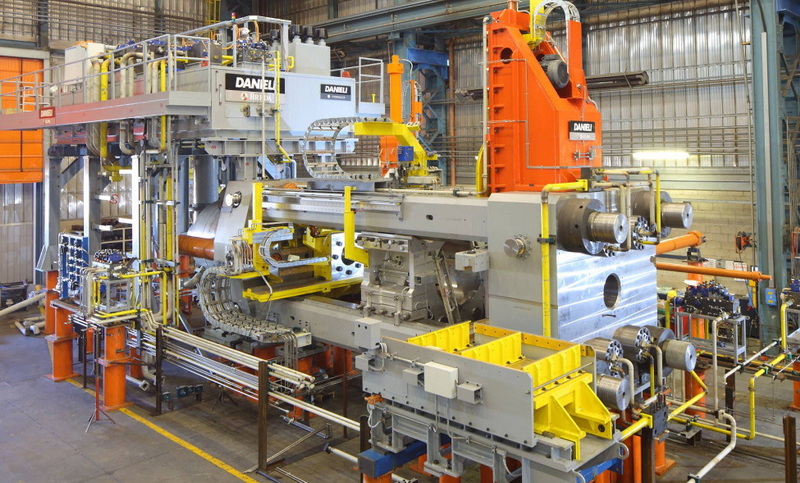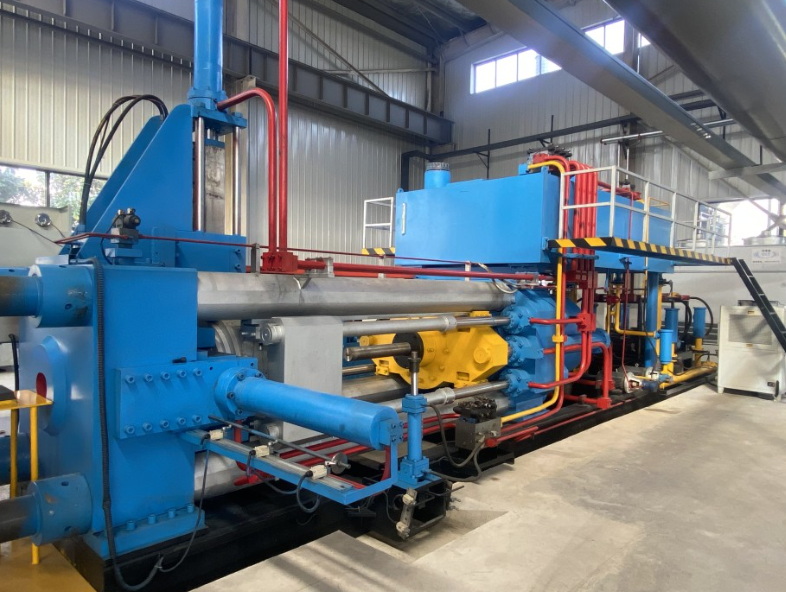Content Menu
● Understanding the Aluminum Extrusion Process
● Key Steps for Efficient Operation
>> 1. Proper Setup of Equipment
>> 2. Monitoring Temperature
>> 3. Hydraulic System Maintenance
>> 4. Press Alignment
>> 5. Lubrication of Moving Parts
● Advanced Techniques for Improved Efficiency
>> 1. Implementing Automation
>> 2. Data Analytics for Process Optimization
>> 3. Training Operators
● Troubleshooting Common Issues
● Environmental Considerations
>> 1. Waste Management
>> 2. Energy Efficiency
● Conclusion
● FAQs
>> 1. What is the typical temperature range for preheating aluminum billets?
>> 2. How often should I perform maintenance on my extrusion press?
>> 3. What causes surface defects in extruded profiles?
>> 4. How can I improve productivity during extrusion?
>> 5. What should I do if I notice hydraulic pressure fluctuations?
Aluminum extrusion is a crucial manufacturing process that shapes aluminum into various profiles by forcing it through a die. Operating an aluminum extrusion press efficiently requires a combination of proper setup, maintenance, and operational techniques. This article will provide an in-depth overview of how to operate an aluminum extrusion press efficiently, including essential steps, tips for maintenance, and troubleshooting common issues.

Understanding the Aluminum Extrusion Process
The aluminum extrusion process can be likened to squeezing toothpaste out of a tube; as pressure is applied, the aluminum billet is forced through a shaped die, resulting in a continuous profile. The process involves several key steps:
1. Preparing the Extrusion Die: The die must be designed according to the desired profile shape. It is typically made from steel and preheated to ensure optimal flow of the aluminum.
2. Preheating the Aluminum Billet: The aluminum billet is heated to a temperature between 400°F and 500°F (approximately 200°C to 260°C) to enhance its malleability.
3. Transferring the Billet to the Press: Once preheated, the billet is placed into the extrusion press container.
4. Applying Pressure: A hydraulic ram applies significant pressure (up to 15,000 tons) to push the aluminum through the die.
5. Cooling and Cutting: After exiting the die, the extruded profile is cooled and cut to length.
Key Steps for Efficient Operation
1. Proper Setup of Equipment
- Die Preparation: Ensure that the die is clean and free from any debris before each use. Preheat the die adequately to prevent sticking and ensure smooth flow.
- Billet Preparation: Cut billets uniformly and preheat them properly to avoid inconsistencies during extrusion.
2. Monitoring Temperature
Maintaining optimal temperatures throughout the process is crucial. The melting point of aluminum is approximately 1,220°F (660°C), but for extrusion, billets are typically heated between 700°F (370°C) and 930°F (500°C) depending on the alloy used.
- Temperature Control: Use thermocouples and temperature sensors to monitor both billet and die temperatures continuously.
3. Hydraulic System Maintenance
The hydraulic system is vital for applying pressure during extrusion. Regular maintenance includes:
- Checking Fluid Levels: Ensure hydraulic fluid levels are adequate and that there are no leaks in hoses or connections.
- Regular Inspections: Conduct daily walk-around inspections to identify any potential issues early on.
4. Press Alignment
Proper alignment of the press components is essential for preventing uneven wear and ensuring consistent quality in extrusions:
- Alignment Checks: Regularly check the alignment of key components like the main ram and container.
5. Lubrication of Moving Parts
Friction can significantly affect performance. Ensure all moving parts are well-lubricated using manufacturer-recommended lubricants:
- Daily Lubrication: Apply lubricant to sliding surfaces such as guides and carriers daily.

Advanced Techniques for Improved Efficiency
While basic operational techniques are essential, there are advanced strategies that can further enhance efficiency in operating an aluminum extrusion press:
1. Implementing Automation
Automation technologies can significantly improve efficiency by reducing manual intervention and ensuring consistent operation:
- Automated Control Systems: Use programmable logic controllers (PLCs) to automate temperature monitoring, pressure application, and cooling processes.
- Robotic Handling Systems: Employ robots for loading/unloading billets and extruded profiles, minimizing human error and increasing speed.
2. Data Analytics for Process Optimization
Utilizing data analytics can help identify trends and areas for improvement:
- Real-Time Monitoring: Implement systems that provide real-time data on temperature, pressure, and production rates.
- Predictive Maintenance: Use analytics to predict when maintenance should be performed based on usage patterns, reducing unexpected downtime.
3. Training Operators
Well-trained operators are critical for efficient operation:
- Regular Training Sessions: Conduct training sessions focusing on best practices for operating machinery, understanding material properties, and troubleshooting common issues.
- Safety Protocols: Ensure all operators are familiar with safety protocols to minimize accidents during operation.
Troubleshooting Common Issues
Even with proper setup and maintenance, issues can arise during operation. Here are some common problems and their solutions:
- Inconsistent Extrusion Profiles: This may be caused by improper temperature control or die wear. Regularly inspect dies for wear and replace them as necessary.
- Solution: Adjust heating times or temperatures based on real-time monitoring data to ensure consistent material flow.
- Hydraulic Pressure Fluctuations: Check for leaks or blockages in hydraulic lines if pressure drops unexpectedly.
- Solution: Conduct regular maintenance checks on hydraulic systems to identify potential leaks or damaged components.
- Surface Defects on Extrusions: Ensure that both the billet and die are clean before operation; contaminants can lead to surface imperfections.
- Solution: Implement strict cleaning protocols before each run to maintain surface quality.
Environmental Considerations
Operating an aluminum extrusion press also involves environmental responsibilities:
1. Waste Management
Efficient waste management practices should be implemented:
- Recycling Scrap Aluminum: Collect scrap generated during production processes for recycling.
- Minimizing Chemical Waste: Use environmentally friendly lubricants and coolants wherever possible.
2. Energy Efficiency
Reducing energy consumption not only lowers costs but also benefits the environment:
- Energy-Efficient Equipment: Invest in modern presses that use less energy while maintaining high performance.
- Regular Energy Audits: Conduct audits to identify areas where energy consumption can be reduced.
Conclusion
Operating an aluminum extrusion press efficiently requires meticulous attention to detail at every stage of the process—from setup and maintenance to monitoring performance metrics. By following best practices for equipment setup, temperature control, hydraulic system maintenance, alignment checks, lubrication, advanced techniques like automation and data analytics, as well as environmental considerations, manufacturers can maximize productivity while minimizing waste.

FAQs
1. What is the typical temperature range for preheating aluminum billets?
The typical preheating temperature range for aluminum billets is between 400°F and 500°F (approximately 200°C to 260°C).
2. How often should I perform maintenance on my extrusion press?
Regular maintenance should include daily inspections and lubrication checks; more extensive maintenance should be scheduled based on usage frequency.
3. What causes surface defects in extruded profiles?
Surface defects are often caused by contaminants on either the billet or die; maintaining cleanliness is essential.
4. How can I improve productivity during extrusion?
Improving productivity can be achieved through better temperature control, optimizing die design, implementing automation technologies, and ensuring proper alignment of press components.
5. What should I do if I notice hydraulic pressure fluctuations?
If you notice fluctuations in hydraulic pressure, inspect for leaks or blockages in hydraulic lines immediately.






















